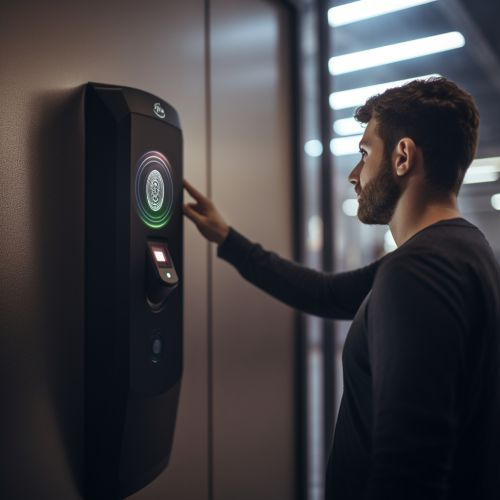Identity Verification
Overview
Identity verification is a process used to confirm a person's identity. This process is typically used by organizations and businesses to ensure that a person is who they claim to be. This is done by comparing the person's identifying information with data that is known to be valid and reliable. Identity verification can be done in various ways, including through the use of biometric data, document verification, and knowledge-based authentication.
History
The need for identity verification has been present throughout history. In ancient times, personal recognition was the primary method of verifying someone's identity. However, as societies grew and became more complex, the need for more reliable methods of identity verification became apparent. The use of passports and other forms of identification documents became common in the 19th century. The advent of the digital age has brought about new methods of identity verification, such as biometric authentication and online verification processes.
Methods of Identity Verification
There are several methods of identity verification that are commonly used today. These include document verification, knowledge-based authentication, biometric authentication, and online verification.
Document Verification
Document verification involves the use of identification documents to verify a person's identity. This can include passports, driver's licenses, and other government-issued identification. The documents are checked for authenticity and the information on them is compared with the information provided by the person.
Knowledge-Based Authentication
Knowledge-based authentication involves the use of personal information that is known only to the person being verified. This can include passwords, PINs, and answers to security questions. This method of identity verification is commonly used in online transactions and access to secure systems.
Biometric Authentication
Biometric authentication involves the use of unique physical or behavioral characteristics to verify a person's identity. This can include fingerprints, facial recognition, voice recognition, and iris scanning. Biometric authentication is considered to be one of the most secure methods of identity verification, as these characteristics are unique to each individual and difficult to forge.
Online Verification
Online verification involves the use of internet-based systems to verify a person's identity. This can include the use of social media profiles, email addresses, and online databases. Online verification is often used in conjunction with other methods of identity verification to increase the level of security.
Applications of Identity Verification
Identity verification is used in a wide range of applications, from online transactions to access control in secure facilities. Some of the most common applications of identity verification include:
Financial Transactions
Identity verification is crucial in financial transactions to prevent fraud and identity theft. Banks and other financial institutions use various methods of identity verification to ensure that transactions are being conducted by the rightful account holders.
Access Control
Identity verification is used in access control systems to ensure that only authorized individuals can gain access to secure areas. This can include buildings, rooms, and computer systems.
Online Services
Online services, such as social media platforms and email providers, use identity verification to ensure that accounts are being created and used by real people. This helps to prevent spam, fraud, and other forms of abuse.
Challenges in Identity Verification
While identity verification is crucial in many areas, it also presents several challenges. These include privacy concerns, the risk of identity theft, and the difficulty of verifying identities in a digital environment.
Privacy Concerns
One of the main challenges in identity verification is the need to balance security with privacy. While identity verification processes often require the collection and use of personal information, there is a need to ensure that this information is handled in a way that respects the privacy of individuals.
Risk of Identity Theft
Identity verification processes can also present a risk of identity theft. If the information used in these processes is not properly secured, it can be stolen and used to commit fraud.
Difficulty of Verifying Identities in a Digital Environment
Verifying identities in a digital environment presents its own set of challenges. With the increasing use of online services, there is a growing need for reliable methods of online identity verification. However, these methods must be able to withstand sophisticated cyber attacks and other forms of fraud.
Future of Identity Verification
The future of identity verification is likely to involve the increased use of biometric authentication and other advanced technologies. As the digital landscape continues to evolve, so too will the methods used to verify identities. This will require ongoing research and development to ensure that identity verification processes remain secure and effective.
See Also


